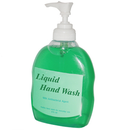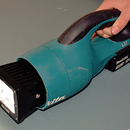Introduction: Frame It!
Quite often I come across old timber that would be great for a project but there just isn't enough of it to make a piece of furniture or a substantial project.
By making a picture frame I can use this small amount of timber that would normally just be thrown out or burnt. You can also get creative with what you put in the frame it doesn't just have to be a picture, license plates, coins, tee shirts, coat hooks, cards stamps or collections of flat objects. I particularly like the clothes line photo frame idea.
Depending on the look I'm after I will either sand the timber thoroughly or as in the case of the plate frame leave the paint on to give it an aged appearance
Step 1: Stuff You Will Need
In addition you will also need some tools
- mitre saw
- router or saw bench
- large square
- vee nails
- hammer
- staple gun
- glue
- sand paper
- furniture oil
- scrap wood to make a jig
- thin plywood or MDF
- masking tape
- optional glass or clear acrylic plastic
- string
Step 2: Preparing the Timber
Old timber is usually full of nails, screws, staples or other metal objects which need to be removed. Running over a nail or screw with your table saw or router will ruin your whole day, so you really need to check the timber thoroughly before going near any power tools with it. Also if the timber has been outside or on the ground it may have mud or small stones stuck to it, again your going to have a bad day if a rock goes through the thicknesser or router.
Once clean, you have a couple of options cutting out the rebate to fit the picture into. If you have a saw bench cutting the rebate is as simple as setting the height of the blade and set the fence close to the blade and pushing the timber through the saw. You may have to reset the fence and run the timber through again, if you have a thick back board or want to have glass in your frame
This can also be done with a router with a rebate bit. This is a little messy and it can be difficult to clamp down short pieces of timber but the results are just as good as a saw bench.
You will need a 3mm rebate or a 6mm rebate if you want to put glass in the frame.
Step 3: Cutting and Measuring
Measuring and cutting the frame correctly is the most difficult part of this project, but if you make a mistake just remember the 2 long side have to be the same length and the 2 short sides must be the same length and if the frame ends up too small most picture can be cut down in size.
You will need a miter saw to cut the frame as each angled cut must be precisely 45 degrees,you can use a hand saw type or an electric saw.
I find it helpful to cut 2 ends (a short and a long) first and sit them on the bench at 90 degrees back side up and check my measurements with my picture, as it can get confusing where to mark out the next cut and how the picture sits in the frame. I then mark out the 2 sides and cut them first. If I'm going to make a mistake here its better to make them too long, you can always go back and cut it down some more.
Then its a good idea to recheck you measurements and cut 2 more identical pieces for the other 2 sides.
I found it useful to make a "jig" which is just made out of scrap MDF to hold the frame at 90 degrees when marking out or fastening the frame together
Step 4: Assembling the Frame
The nails I'm using are called Vee nails or Vezzy nails which are cheap easy to use and are specifically designed for picture frames
and you can get them here
http://www.carbatec.com.au/veezy-nailer_c8640
I have also found that a heavy duty staple gun also works well. The Vee nail punch has a magnet on the end and its just a case of selecting the right size Vee nail, positioning it in the right direction and hitting the punch with a mallet. The Vee nail should be positioned so the flat part of the nail goes parallel with the grain.
I like to make two L shapes first and then join the two L shapes together to form the frame. It certainly helps to make a jig as shown in the photos, as it keeps everything square and flat.
That done its time to cut out the back, which is just a case of measuring the length and width so it fits inside the rebate. You can use 3mm MDF, plywood or even thick card will work on a small frame.
The cheap poster I got was from a junk shop. The image of a train crash in France in the 1890s, came with a backboard and a plastic coating. Unfortunately some red neck thought it would increase its value by printing a swear word across the top of it. I decided to cut the 5#!T off as I didn't really want to look at that every day and it detracted from the rest of the photo.
Step 5: Finshing Off
The sanding is easier to do if you do most of it before you cut the timber, and depending on the look your after, you can give it a light sand, just enough to make the paint look worn and aged, or you can sand the hell out of it with a machine and make the timber look almost new, or somewhere in between. The photos have examples of each. I like to use furniture oil to protect the timber as I like the matte natural looking finish, and it smells better than polyurethane or paint. The furniture oil will also make old paint look fresher as it makes the colors stand out and gets rid of that white powder layer of oxidized paint.
You have a few chooses about how you attach the back board. If your not planing on removing your image from the frame, the back can be stapled on, but care needs to be taken if you have glass in the frame. Masking tape also works well for small frame. If you think you would like to replace your photo regularly then some small strips of MDF can be cut and screwed or nailed into the frame so the back can be removed.
All that remains it to staple a piece of string to the back of the frame and hang it up.
The photos are of some of the frames made with recycled timber.

Participated in the
Reuse Contest













